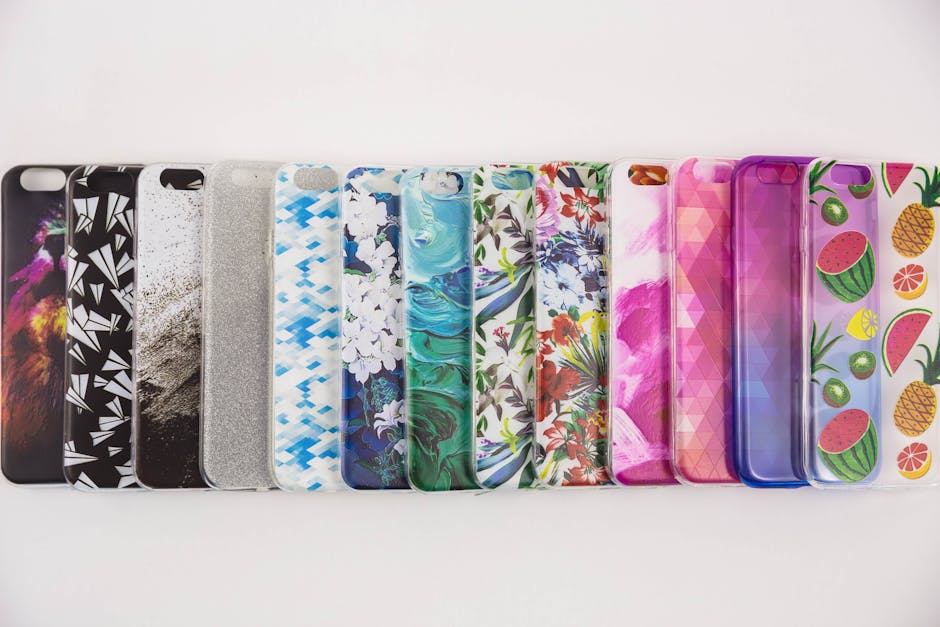Tech for the Unseen: How Smart Gadgets Empower the Visually Impaired
Imagine a world where every obstacle becomes an opportunity and every sound turns into a message. The realm of technology is expanding rapidly, especially in how it bridges the gap for those with visual impairments. Smart gadgets, armed with artificial intelligence (AI) and innovative sensory feedback, are transforming the experiences of visually impaired individuals, providing tools that assist in navigating daily life and enhancing independence. In this article, we will explore the diverse range of technologies enhancing the lives of the visually impaired today, featuring groundbreaking gadgets and their practical applications.
The Rise of AI in Assistive Technology

The correlation between AI and assistive technology is undeniable. Today, AI isn’t just a futuristic concept; it’s a tangible solution that addresses real-world challenges. Smart gadgets equipped with AI can analyze surroundings and anticipate needs, making them invaluable for visually impaired users. For instance, devices that utilize computer vision can interpret what a user is facing in real-time, immediately verbalizing useful information such as traffic signals, obstacles, or even the identification of objects. This technology empowers users to interact with their environment in unprecedented ways, enhancing both travel safety and life quality.
A prime example is the Aira service, an innovative platform connecting visually impaired individuals with trained agents via video call. This technology not only supports navigation but also boosts confidence by providing guidance in unfamiliar settings. The use of AI here to decode real-world challenges signifies a leap toward independence.
Sensory Feedback: A New Dimension in Gadgets

Sensory feedback plays a pivotal role in how technologically advanced devices communicate with users. Integrating haptic feedback, auditory cues, and even olfactory signals into gadgets enriches the user experience. For instance, wearable devices like the Sunu Band utilize haptic feedback to alert users of nearby obstacles. This thin, wrist-worn device emits ultrasonic waves and notifies the wearer of its findings through gentle vibrations, further familiarizing them with their environment without overwhelming their senses.
Moreover, haptic technology is trending in various sectors, making waves across the globe. The concept isn’t limited to assistive devices. Ordinary tech gadgets are now integrating tactile feedback to foster deeper emotional connections in interactions. For further insight about how this haptic evolution is shaping our experience, check out our article on the future of haptic feedback devices.
Innovations in Smart Canes and Navigation Aids

One of the most remarkable advancements for the visually impaired has been the innovation of smart canes. Traditional mobility aids are now enhanced with features that provide real-time assistance and feedback. The WeWALK Smart Cane integrates smartphone functionality, allowing users to receive navigation instructions through intuitive audio feedback. Along with navigation, it also includes features such as nearby public transportation options.
Further democratizing access, the device emphasizes user independence by minimizing reliance on external assistance. Innovations like smart canes revolutionize traditional mobility aids, increasing convenience and user adaptability.
Additionally, advancements in indoor navigation systems, powered by AI, can now help users scan and map their surroundings, offering personalized routes and highlighting potential hazards, bridging the gap left by conventional GPS systems that often falter indoors.
Voice-Activated Assistance: A Sense of Agency

Universal voice recognition has also changed the way visually impaired individuals interact with technology. Products like the Amazon Echo and Google Home have become staples in many households, providing easy verbal access to information and services. These AI-driven assistants can fulfill a variety of tasks, from setting reminders to phoning services, essentially becoming an extension of the user’s capabilities.
Moreover, maintaining communication is crucial for personal and professional growth. By harnessing the power of voice-activated technologies, visually impaired individuals can seamlessly manage their schedules, enabling better time management and reducing anxiety associated with daily tasks.
If you're intrigued by the emotional intelligence these devices bring to personal relationships, consider exploring our insightful piece on emotionally intelligent devices.
Smart Glasses: Bridging the Visual Gap

Smart glasses are another fascinating area of development in assistive technology. Designed specifically for visually impaired users, these high-tech eyeglasses use cameras to capture images and translate them into audio descriptions. The OrCam MyEye is a notable example of this technology. It allows users to recognize faces, read text, and identify products, all through the process of real-time auditory feedback.
This step transforms mundane tasks into manageable activities, creating a sense of empowerment and independence. Such devices also enhance social interactions, enabling users to recognize acquaintances and engage more profoundly.
To understand how augmented reality affects mental wellness, it’s worth checking out our insights on augmented reality devices for mental wellness.
Community-Centric Solutions

As essential as technology can be, it’s equally critical to recognize the need for community-driven solutions. Tech companies must engage with visually impaired individuals to create machines that genuinely respond to their needs. Initiatives by organizations such as the National Federation of the Blind and partnerships with tech startups bring awareness and ensure collective voices are heard.
By creating an inclusive ecosystem where feedback translates into innovations, users not only gain upgraded gadgets but also bolster a sense of community and connection. This connection is vital because empowered individuals are more likely to share experiences, thus paving the path for the next wave of technological innovation.
Embracing Wearable Technologies for Everyday Life

Wearable technology is evolving rapidly, and for visually impaired users, it’s presenting massive potential right at their fingertips—often literally. Take, for example, wearable biofeedback devices that monitor bodily reactions to stress or anxiety. These devices can provide real-time data, helping users manage their emotional and physical well-being. Insights gained from using these technologies can assist visually impaired individuals in recognizing and adapting to their emotional states, promoting holistic care and enriching social interactions.
You may want to expand your knowledge on emotional tracking gadgets by delving into our comprehensive guide on emotion-tracking gadgets.
The Future: What’s Next for Smart Gadgets?

As we look ahead, the sky's the limit for innovations in assistive technology. Future smart gadgets are predicted to be even more adaptive and intuitive, possibly integrating elements like brain-computer interfaces (BCIs). While this may seem like science fiction today, advancements are in play, aiming to refine how users perceive and interact with their environment.
The ongoing evolution of AI and machine learning suggests that future gadgets will offer an even more personalized experience, reacting not only to immediate needs but also adapting based on accumulated user data. This could include a learning smart router that understands patterns in movement and usage, ensuring users always have maximum connectivity.
Final Thoughts: Empowerment through Innovation

The susceptibility of those with visual impairments to isolation and dependency is another stark reality confronting society. Nevertheless, thanks to emerging smart gadgets infused with AI and sensory feedback, we are witnessing an unprecedented shift toward inclusivity and independence. Innovations such as smart canes, voice-activated assistants, smart glasses, and community engagement illustrate how technology can foster empowerment by promoting autonomy.
As we move forward, it’s crucial for manufacturers to prioritize user feedback, ensuring devices genuinely meet the unique needs of individuals within this community. The call to action is clear: Let’s celebrate and support the continued development of technologies that enhance daily living, serving not only as tools but as partners in crafting a more inclusive future for everyone.



